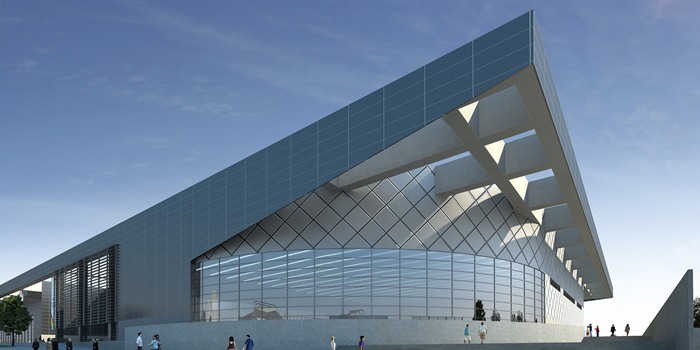The Courier was part of an exclusive tour of the under-construction Commonwealth Games venues. Jack McKeown looked round the National Indoor Sports Centre and Sir Chris Hoy Velodrome, which together will form one of the biggest indoor sports complexes in Europe.
On Thursday, the Glasgow 2014 Commonwealth Games were given a shot in the arm with news the BBC have signed up.
The corporation, which will provide television, radio and online coverage, have covered every Commonwealth Games since 1954 and paid an undisclosed sum for the 2014 rights.
It was a welcome piece of good news, coming just days after Glasgow 2014 chief executive John Scott fell on his sword after reportedly accepting free tax advice worth thousands of pounds from a supplier.
Commendably, the organisers didn’t cancel a facilities tour for the editors of Scotland’s major newspapers which in an appalling piece of timing was scheduled just three days after the John Scott scandal hit.
Unsurprisingly, given he’s only been in the job a couple of days, acting chief executive David Grevemberg didn’t yet seem to have a full command of his brief and the affable American handed over to head of venue development Ian McKenzie to do the talking.
He took the assembled hacks in hard hats, wellies and high-vis vests on a tour of the National Indoor Sport Arena (NISA) and the Sir Chris Hoy Velodrome, the major construction project for the games.
The two facilities are being built together, along with a sports hall, to create one of the biggest indoor sports facilities in Europe.
“It will house the first indoor velodrome in Scotland and only the fourth in the UK,” Ian explained. “The centre should be completed by next June and open to the public in the autumn.
“The first event to be held there will be the junior track world championships in 2013 and we’ll be monitoring those closely to learn how we can best run the Commonwealth Games events.”
Located on a 25-acre site opposite Celtic Park, in Glasgow’s East End, the facility is being built by Sir Robert McAlpine. Once completed the indoor arena, which will host badminton events during the games, will have 5000 seats, while the velodrome will have 2000 permanent seats, increased to 4000 during the course of the games.
Seen up close, the facilities are staggeringly enormous. The fifth level of the still-under-construction building gives a panoramic overview of both NISA and the velodrome.
NISA contains a 200m athletics track, a 137m sprint/warm up straight, and two sports halls. An additional community sports centre is attached to the building.
During the games it will be used as a warm-up facility so athletes can emerge into the arena ready for competition. Although easily the size of any other sports centre, it’s dwarfed by the tremendous construction it sits beside.
After the competition, the arena and velodrome will be kept as a community facility to help turn round east Glasgow’s pretty awful public health record, as well as providing a national training centre for basketball, netball, cycling and volleyball.
The £150 million Athletes Village will occupy a 100-acre site adjacent to the velodrome and within sight of Celtic Park. After the games, the village will become a residential area, with 304 private houses, 400 homes for rent and a 120 bed care home.
The total cost of the Commonwealth Games is £524 million. The Scottish Government and Glasgow City Council provide the bulk of that, with the Organising Committee raising the final £100 million through ticket sales and sponsorship.
